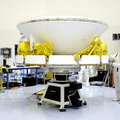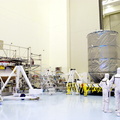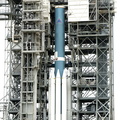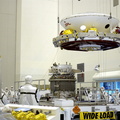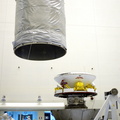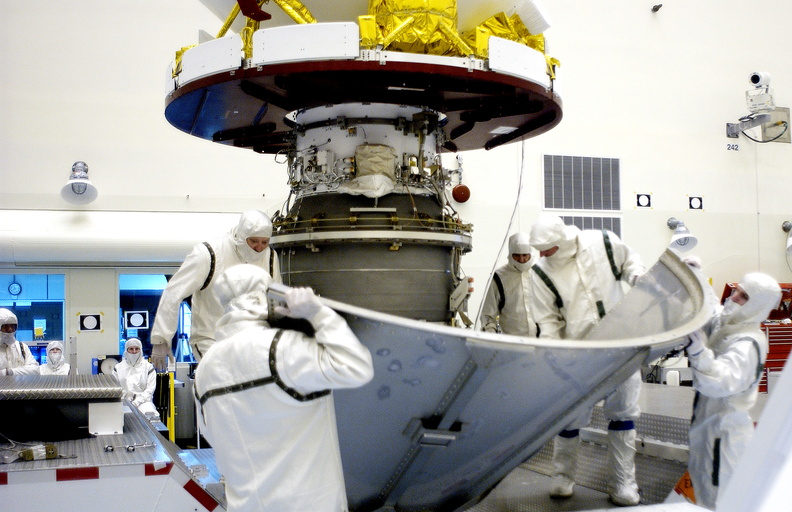
WIKIARCHIVES.SPACE
The Human Spaceflight Archive

Information
- Taken in
- Kennedy Space Center
- Author
- NASA
- Description
- Workers in the Payload Hazardous Servicing Facility place the lower sections of the transport canister around the Mars Exploration Rover 2 (MER-2). After encapsulation, it will be transferred to Launch Complex 17-A, Cape Canaveral Air Force Station. MER-2 is one of NASA's twin Mars Exploration Rovers designed to study the history of water on Mars. These robotic geologists are equipped with a robotic arm, a drilling tool, three spectrometers, and four pairs of cameras that allow them to have a human-like, 3D view of the terrain. Each rover could travel as far as 100 meters in one day to act as Mars scientists' eyes and hands, exploring an environment where humans can't yet go. MER-2 is scheduled to launch no earlier than June 8 as MER-A aboard a Delta II rocket.
- Created on
- Saturday 24 May 2003
- Albums
- US SPACE PROGRAM / PROBES / MARS / MARS EXPLORATION ROVERS / SPIRIT / Rocket preparation
- Source link
- https://science.ksc.nasa.gov/gallery/photos/2003/
- Visits
- 202
- Rating score
- no rate
- Rate this photo
- License
- CC BY-NC-ND
- Modified by WikiArchives
- No (original)
- Downloads
- 13
Powered by Piwigo






